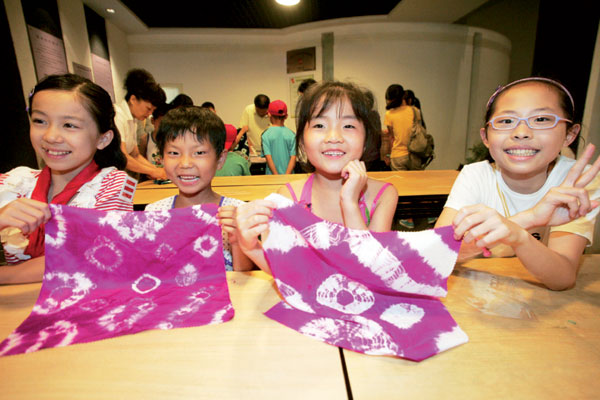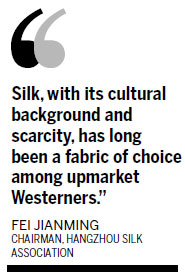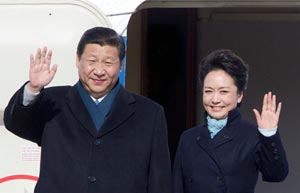A very long and winding silk road
By Yan Yiqi (China Daily) Updated: 2014-02-17 07:23
|
 |
|
Silk has been a pillar industry of Hangzhou for more than 1,300 years. The city is said to contribute a quarter of the world's silk supply. Photos provided to China Daily |
Like Ke, Tu has spent a lot of time fretting about the industry in Hangzhou.
"People in the industry have mixed feelings about silk. It is seen as an important cultural symbol and the textile industry looks on it with pride. But there are those who reckon all the glamour is something from a bygone age. It is nigh impossible to get that back."

Tu's concerns for the industry are all the more understandable given that she has not only devoted her life to silk, but that she follows her mother and four other generations of the family on the same path. Her mother spent the best part of a lifetime trying to sell Hangzhou silk to the world with its own brand, a goal that remained unrealized when she retired in 2012.
For China in recent years, transforming and upgrading traditional industries has posed a huge challenge. The silk industry in Hangzhou is no exception. Many industry insiders believe one way of doing this is to make more of the possibilities in cultural industries. For example, silk companies in Hangzhou should consider developing exquisite tourism souvenirs with silk, Wu says.
"You can find silk souvenir products in markets and in tourism spots anywhere in Hangzhou, but they are not exquisite - and they are far from original. Silk companies need to put a lot more effort into designing these things, in particular giving them a distinct Hangzhou style."
As downbeat as some of the assessments of the industry's performance by some insiders may be, things are far from grim.
In November, Wensli set up a strategic cooperation relationship with Marc Rozier, a well-known silk brand in Lyon, France.
Marc Rozier will produce silk scarves for Wensli, while Wensli will share its sales channels in China with its French partner.
"The scarves, under our brand, will be designed, dyed and made in France," Tu says. "The price will be two-thirds that of Hermes'."
The scarves will go into the high-end market in China. The company nurses hopes of selling them in global luxury markets such as France and Italy, Tu says. "The strong impression that this collaboration has left me with is that silk making in France is highly valued. They pay extreme attention to the industry and I think that is why 'Made in France' is such a treasured label."
Tu says Wensli's goal is to become China's Hermes in the luxury market and to keep pace with global fashion.
It augurs well for silk in Hangzhou, Fei says.
"Hangzhou has its advantages in developing the silk industry, including its cultural background, the industrial chain that is already in place and the diversified competition. Not every company should necessarily do what Wensli is doing. But so long as it sticks to innovation and positions its brands accordingly, I think the future is bright."
|
 |
 |
- NHTSA says finds no 'defect trend' in Tesla Model S sedans
- WTO rare earth ruling is unfair
- Amway says 2014 China sales may grow 8%
- President Xi in Europe: Forging deals, boosting business
- CNOOC releases 2013 sustainability report
- Local production by Chery Jaguar Land Rover this year
- Car lovers test their need for speed in BMW Mission 3
- China stocks close mixed Monday

















